Last month at Apple’s annual developer conference the company outlined the future of Apple Watch, at least in terms of software, for the next year. One item that seemed to surprise many was the announcement that Apple would be adding support for cycling power meters (among other cycling sensor types). While that might have come as a surprise to some, the announcement wouldn’t have been a surprise when viewed through the lens of numerous other Apple sports-focused announcements over the past year. These announcements have been heavy on data metrics, and heavy on pushing the boundaries of what people have historically thought of when it comes to the native capabilities of the Apple Watch.
In this post, I’m going to dive into how power meters work on the Apple Watch, now that Apple has transitioned from developer beta to public. Obviously, I expect (and hope) things will change between now and September, when Apple historically releases the new version of watchOS to the public as a production build (WatchOS 10 in this case). Usually, that’s done alongside new/annual Apple Watch releases. If we look at last summer with triathlon mode and running power, we saw some notable/substantial changes during beta, especially in the August timeframe.
Additionally, last month while at Apple’s Cupertino headquarters for WWDC, I had a chance to sit down with Jay Blahnik, Apple’s Vice President of Fitness Technologies, to discuss the power meter addition and why Apple chose to do it. I’ve included that in the first section below.
With that, let’s dive into it.
But Why Power?
Despite not being a surprise, I was still curious as to their reasoning for adding power. To begin, with most (virtually all?) power meter owners already having a device capable of recording power meter data, why focus on adding power meter support? To that, Jay Blahnik says:
“Last year was the most expansive update to the Workout app that we’ve ever done, was focused on runners first. This year we put a big focus on cycling. We’ve gotten feedback for years that folks would like to be able to connect their accessories to the watch. And we also also though this is a really great opportunity to have the phone play a role. So we’re really excited about where we’ve started, but I would say ‘watch this space’, we’re just as excited about what’s coming in the future”
There are two pieces of note here. What’s left unsaid in Jay’s comment is that up till now, 3rd party app cycling sensor support has sucked. There have been incredibly few apps that can even connect to power meters (without the phone), and even fewer that manage to do it even halfway correctly. Every time I considered writing an article about “How to Connect a Power Meter to an Apple Watch”, my stomach turned at the options. None were awesome.
The second piece he mentions is “the phone”, as part of this announcement, Apple also basically made a mode on your phone that mirrors your watch data fields as a full-screen bike computer. Today, it’s an exact mirror (no customization of data fields), but does have some fields larger than on the watch. More on that in a different post. It’s more ideal for things like bike commuting than most hardcore cyclists.
I was then curious whether they saw more opportunity in running power or cycling power, in terms of which one people would use more of going forward. While Jay didn’t want to try and make predictions there, he did note:
“I wouldn’t make any predictions about it. What I would say is, I think if you were to separate runners and cyclists as distinct groups, there’s probably more cyclists that have an affinity or a thought process around power, than runners that have that same sort of connection to power. Running’s a big group, but there’s probably more cyclists that are familiar with what power is then maybe runners would be familiar with what running power is.”
Of course, that immediately begs the next question: Do you see this as something that’s more likely to get existing Apple Watch users to add a power meter, or something that’s more likely to drive the adoption of Apple Watch for existing power meter users?
“We think both are great. So we’re constantly amazed at how many of our users find their way into things they never thought were interesting to them, because they have metrics available on their watch with them every day.” following with “So I would say in this space we’re certainly happy with people that have always wanted this feature. We also know that for people that understand the watch can do that, they may suddenly get excited about these features, and it’ll put them on their own journey. I think we care about both – people that are new to it, and people that are already deep in it.”
There’s more from that conversation I’ll include in the relevant new feature area posts, like the phone companion app I’ll discuss separately, or the new topographic mapping post from last week. Still, I’d say the overarching theme of that conversation is that Apple seems to be aware that power meters can be viewed as a niche thing, and they’re OK with that. There are plenty of niche things in the Apple ecosystem, and after all, competitor Peloton has built a massive empire of a business almost entirely upon the power/wattage foundations. Thus, while power meters may be geeky, the reality is that plenty of ‘normal people’ train with them day in and day out already today.
Setting it up:
Pairing a power meter with the Apple Watch is silly easy. To do this, you’ll go into the Bluetooth menu on the watch (Settings icon > Bluetooth), and then you’ll see ‘Health devices’ listed. Obviously, as the setting implies, it only supports Bluetooth power meters. Though, virtually all power meters made in the last 8+ years are dual ANT+/Bluetooth. You can save multiple power meters here, alongside heart rate sensors and cadence/speed sensors. Further, you can pair smart trainers as long as they broadcast as a Bluetooth power meter (all do). You cannot directly pair the Bluetooth FTMS signal at this time, but again, all smart trainers on the market now dual-broadcast Bluetooth FTMS & Bluetooth Power.
Apple will pull in cadence values from the power meter signal (including on trainers), as virtually all power meters send cadence signals. What’s super interesting about this OS-level pairing, is that *ANY* watch app can take advantage of these sensor pairings. Thus, watch apps no longer have to write their own pairing code, nor do they have to deal with calibration, etc… They can simply leverage the native system for that, just like they’d have done previously with heart rate.
Once paired, you’ve got a few options. This includes setting the crank length for power meters that have that option (mainly pedal-based ones), as well as forgetting the pairing:
Further, you can send a calibrate command. When you do this it’ll go off and (hopefully) do the calibrate thing. However, it doesn’t return back the calibration value, unfortunately, so you can’t use it to determine when things are going wrong. I’ve also found it to be a bit finicky in some cases, whether it works at all.
It’s important to now add the power meter data fields to your cycling sport profiles. By default, these won’t be there. While it will record the data to the file regardless, if you don’t add these to your watch bike profiles, you won’t see the power during the ride. Simply go into the ‘Workout’ app, then next to both Outdoor Cycle and Indoor Cycle, choose the “…” to get to more settings, then choose ‘Preferences’, and then choose ‘Outdoor Cycle Workout Views’. Scroll down a bunch and toggle the ‘Power’ option, and then ‘Power Zones’ below that, if you want that.
Additionally, in those menus, just back one level, you can always set a per-workout target, including cycling power zones. This includes a target power level, a power range (custom one-off zone), and then your existing power zones (or off).
With that, you’ll start your workout and then will see your power data on your watch. As the workout progresses, you’ll get more and more data in that little graph, just like you would for other data metrics on the Apple Watch. That all works the same way.
Likewise, cadence will show up too, assuming you’ve got that data field configured. At the end of the workout, you’ll see both your average power and average cadence:
From there, it’ll save the workout to Apple Health, making it accessible to the Apple Fitness app on your phone. Note that at this time, Apple doesn’t leverage any of the cycling sensors within their Apple Fitness+ classes/platform.
Post-Ride Data:
With the ride complete, back on your phone, you can crack open the ride data in Apple Health (the underlying database Apple uses), or, more likely, in Apple Fitness (the pretty side of it). You can see here a few screens from a ride:
Likewise, over in Apple Health, you’ll see the data in the Cycling Power section under Activity, including samples at the per-second realm:
Now comes the tricky part: Getting the data to any other platform.
You see, as with all past workouts types, Apple doesn’t have any file exporter (e.g., to export to a .FIT/TCX/etc…). Instead, they leave that up to 3rd party apps. Thus, as of today, there are officially none that support this. Of course, in various private betas, companies are working on it. I’ve been using a private beta of the HealthFit app (3rd party) to get the data out of Apple Health and into standard .FIT files. Thus, allowing me to upload to 3rd party platforms, or use it within the DCR Analyzer, like so (this is a comparison side-by-side of the same power meter, one recorded on the Apple Watch, the other recorded on a Garmin Edge cycling computer):
But, the process to get apps updated is gonna be long, slow, and bumpy. I outline some of the challenges in the ‘Bugs’ section below, both in terms of normal bugs, but also quirks. We’ll also have to wait and see if companies like Strava will update their apps to import the power data now included within the Apple Watch recorded workouts.
Power Zones & FTP:
In addition to the recording of power meter data, Apple will also calculate your FTP – which is your Functional Threshold Power. Generally speaking, your FTP value is the maximum amount of power you can hold for one hour. There are a variety of tests you can do to determine this, but many wearables and bike computers will automatically calculate it for you now.
In Apple’s case, that calculation requires both a power meter (obviously) and heart rate data (which the watch provides, assuming you wear it on your wrist). Further, it requires at least 5 sessions of 10 minutes in length. The idea behind the multiple sessions is to ensure that they’ve at least got some baseline of data to work with. There’s no point in you doing a single easy ride and giving you a low FTP value because you haven’t put up bigger numbers. On the flip side, the idea behind leveraging the heart rate in the algorithm is to understand whether or not you’re working hard to produce a given wattage. That gives them insight into whether an effort was easy or hard.
This data shows up in a bunch of places, albeit most are kinda buried. First, it’ll show up in Apple Health, if you dive down into your data metrics you’ll find Cycling FTP:
In my case, I’ve done sporadic cycling (with power) workouts over the past month, mainly because of a combination of travel and…well…more travel. These included indoor and outdoor workouts, up to about 2.5 hours in length and on varying intensity from super easy to moderate but not all-out-dying trainer workouts. Throughout this entire time period, my FTP after initial detection, has stayed exactly at 251w. Now, Apple also says that it’ll update your FTP every 30 days. Thus, I think my 5th workout from June was exactly 30 days ago, thus, it appears I need to wait until the next power workout outside that 30-day period. Either way, this seems pretty ripe for confusion.
In terms of accuracy of the FTP value, if this was early June, then that’d be woefully below value (where I last tested in the 300-310w ballpark). However, the month of cycling power-meter enabled workouts as noted as being lighter side. And in particular, I haven’t given it a huge amount of hard (high wattage) workouts to do its computations from. Thus, for the moment I’ll have to sidestep accuracy there and come back to it. However, I don’t quite think it’s working right, given that value has never once changed. This matches a friend who has also seen the same thing.
Now, this FTP value is then pushed back to your cycling power zones on the watch. You can override these zones with custom zones if you want. Here are my default zones:
What’s cool here is that Apple allows you to create custom zones not only of varying power ranges, but also allows you to vary the quantity of zones. For example, if you want an 8-zone system, you can do that. Or, if you want a 4-zone system, you can do that too. If you make custom zones, Apple will not override them with FTP detection.
These can be done in the Apple Watch app on your phone, as seen above. And note that cycling power zones is separate from running power zones, as there are actually no running power zones at all today in the Apple world. Note that at present Apple doesn’t calculate VO2Max from cycling, that’s still a walking/running activity.
Bugs & Stuff:
It goes without saying that beta involves bugs. Given the firmware is currently in public beta 1 (or developer beta 3), it stands to reason there are some bugs. Things like the aforementioned static FTP value being one of them. However, I’ve also encountered a number of others. Thus, while some portions of the platform in this beta are perfectly fine, I wouldn’t say power meter data collection is one of them. There are two clear bugs I’ve stumbled into, and then one quirk. Plus, a thing or two I’d like changed. To begin:
(I’ll update, or remove, or something, this section once these issues are resolved)
1) Half-Cadence (Bug): All cadence values are halved (e.g., 90RPM becomes 45RPM) across a number of power meters I’ve tried (including Garmin Vector 3 and Rally, the most popular power meter models out there). Every once in a while it’ll randomly show the correct value for a second or two, but then it goes back to halving it. Here’s an example of that:
2) Sticky watts (Bug): For at least some of my data sets, I’m seeing substantial sticky-watts issues. Sticky-watts is when you stop pedaling, but the power values continue to be recorded at the original value for a period of time. For example, if you do a sprint, and then stop pedaling, it’ll continue to record “600w, 600w, 600w, 600w” for 6-8 seconds (or more). This is despite the power meter having properly transmitted “0w, 0w, 0w, 0w”, which I can validate using secondary recording files. You can see an example of that here:
3) Multiple values per second (quirk): Now, this isn’t a bug per se, and some might see it as a feature. But it’s a challenging feature for app developers. You see, power meters transmit data in different ways. Simplified: Some can be once per crank revolution, and others once per second. Normally, this doesn’t matter to consumers, because watch/bike computer companies will consolidate this to a single value per second. The ‘problem’ is that Apple actually can write up to two values per second, unconsolidated. Again, there’s nothing wrong with that in the right context, but it’s confusing to app developers, who mostly just pick one value, since virtually all fitness file types today operate on a single-value-per-second timeline. Thus, on one hand, kudos to Apple for allowing extra data. But on the other hand, it’s already causing data discrepancies (as apps will decide how to deal with this differently). Here’s an example of three different valid power meter data points for the 19th second of that minute:
In any case, for the two bugs, the first one surprises me. I wouldn’t have expected to see that this far along. The second one though, doesn’t really surprise me. This is the ‘fun’ part of the Bluetooth power meter specification that many companies have struggled with over the years. And now Apple gets the pleasure of hanging out in that garden for a while too. The only real solution there is for them to spend more time looking at more data sets from power meters. The good news, as I alluded to previously, is there are simply not that many power meters out there. The bad news is that there ARE many versions of firmware for those small set of power meters, of which have vastly different behavior’s over the years. And most consumers never update their power meter firmware. On the bright side, I do appreciate that Apple is recording the power meter firmware version to Apple Health. That’ll help them quite a bit in troubleshooting (as seen above).
Finally, the one thing that isn’t a ‘bug’, but rather ‘by design’, is that Apple isn’t recording left/right power split (for dual power meter sensors). Their system does correctly take the total power value, but does not record the individual left/right metrics. At this stage in development, I think that’s a substantial mistake. I’m already seeing developers struggle with Apple’s power implementation here, and once developers get it sorted out – they sure as heck aren’t going to change it later on to add left/right power split when Apple does get around to adding it. It’s far easier to add that now in the developer/public betas and make it a foundational baseline thing going forward. I’m not asking for all sorts of other fancy power metrics, I’m just asking for simple left/right split. There are a million other silly health/fitness metrics that Apple records (including far more detailed running efficiency metrics), to not record left/right power is just weird (since it’s already part of the data stream being sent to them). Hopefully that changes.
Going Forward:
It’s incredibly cool to see Apple add power meter support. In many ways, it’s core to ‘legitimizing’ the Apple Watch as an endurance sports-focused watch. Or at least, a cycling watch. Certainly, there are many hurdles left. But like with triathlon mode last summer, and advanced running metrics last year, and track mode, and on and on. Each one of these things is part of a foundation to do more advanced things. Be it natively by Apple, or for 3rd party apps.
Undoubtedly, a very small portion of Apple customers will use power meters today. Inversely, a very large portion of the sport-focused cycling scene are using power meters today (yes, the definition is loose there, but if you’ve got a semi-modern GPS bike computer and a dedicated cycling kit to wear, there’s a strong chance you’ve got a power meter on your bike). And certainly, that segment continues to grow. As bike OEMs have begun to charge only a few hundred dollars (if that) upsell for a power meter, the ability to even buy a mid-range road bike without a power meter is going to dissipate. Thus, Apple is getting ahead of that.
Again, I see this move as more about box-ticking within the serious athlete side, rather than Apple trying to win over every cyclist out there. Instead, it’s ticking a box that might keep an iPhone user who rides once or twice a week and happens to have a power meter on their bike, from buying a Garmin watch. It’s unlikely to keep most serious cyclists from buying dedicated bike computers. But again, that’s unlikely to be Apple’s goal.
Still, one glaring gap here is the lack of transmission of heart rate over Bluetooth to 3rd party apps. When I posted my initial WWDC video/post (that video now has nearly 400,000 views), by far, the most common question was some form of “Can I see my Apple Watch heart rate on XYZ app/device/platform?”, nearly 25% of all comments in the first few days asked that (an insane percentage). The answer to that remains no. If I were to look at value for dev time, I’d argue that allowing that would open up far more gym/connected fitness opportunities to leverage an Apple Watch than cycling power (globally speaking). It also legitimizes further the Apple Watch as a sports-focused device, given almost all their competitors in this space have this feature. Hopefully, that’s something that can change during the beta process.
With that – thanks for reading!
Found This Post Useful? Support The Site!
Hopefully you found this review/post useful. At the end of the day, I’m an athlete just like you looking for the most detail possible on a new purchase – so my review is written from the standpoint of how I used the device. The reviews generally take a lot of hours to put together, so it’s a fair bit of work (and labor of love). As you probably noticed by looking below, I also take time to answer all the questions posted in the comments – and there’s quite a bit of detail in there as well.
If you're shopping for the Apple Watch SE (2nd Gen), Apple Watch Series 9 or Apple Watch Ultra 2 or any other accessory items, please consider using the affiliate links below! As an Amazon Associate I earn from qualifying purchases. It doesn’t cost you anything extra, but your purchases help support this website a lot.
And of course – you can always sign-up to be a DCR Supporter! That gets you an ad-free DCR, access to the DCR Shed Talkin' video series packed with behind the scenes tidbits...and it also makes you awesome. And being awesome is what it’s all about!
Thanks for reading! And as always, feel free to post comments or questions in the comments section below, I’ll be happy to try and answer them as quickly as possible. And lastly, if you felt this review was useful – I always appreciate feedback in the comments below. Thanks!

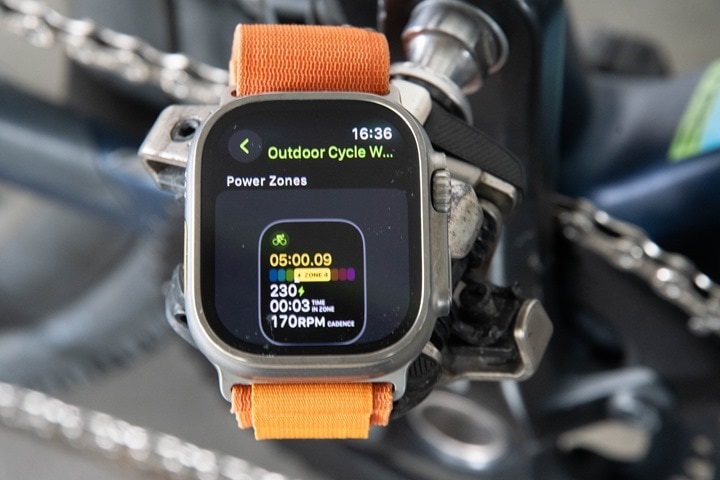
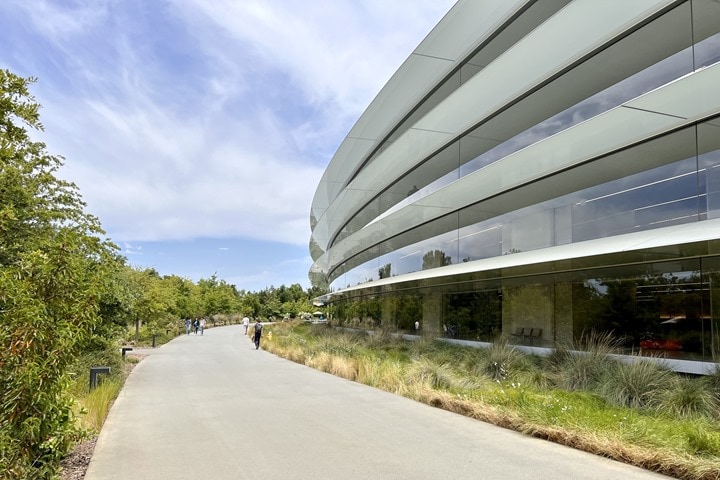
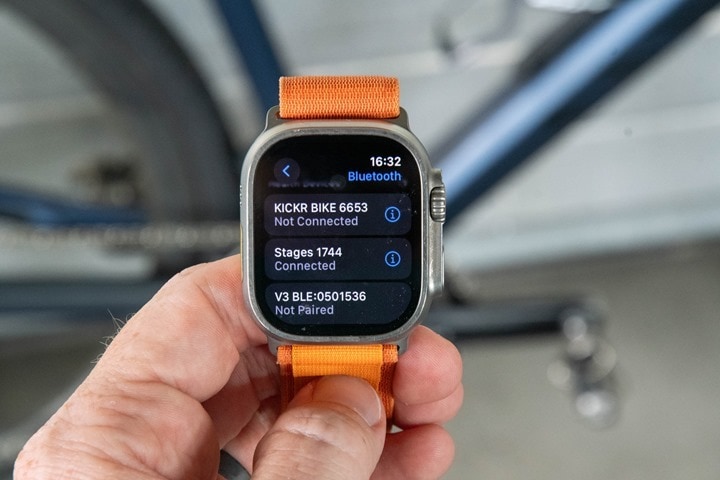
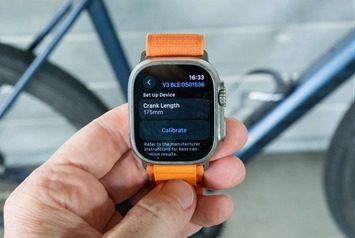
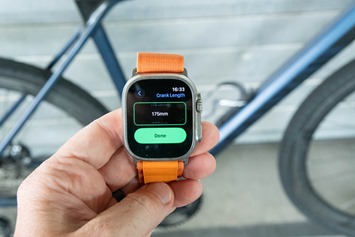
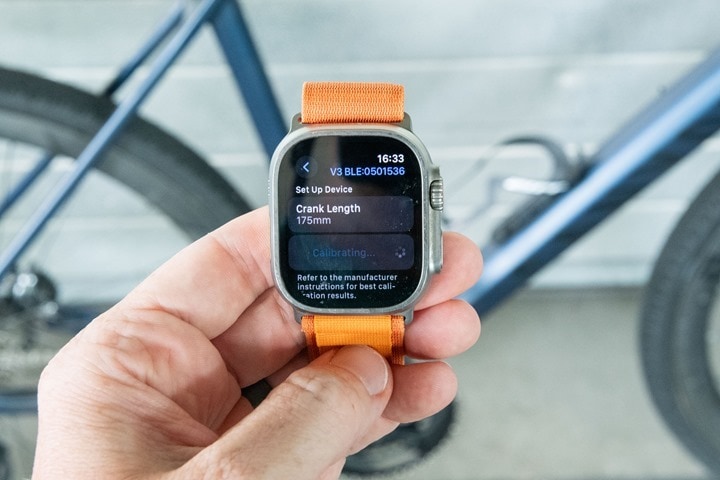
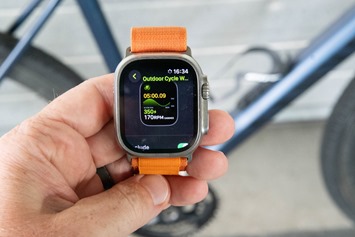
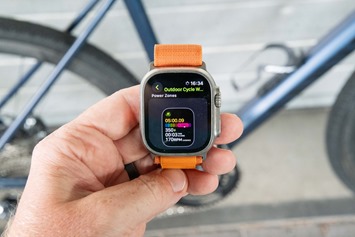
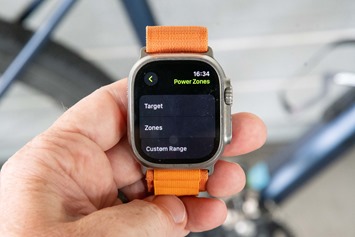
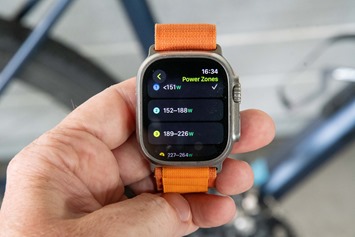
![clip_image001[10] clip_image001[10]](https://media.dcrainmaker.com/images/2023/07/clip_image00110_thumb-1.jpg)
![clip_image001[8] clip_image001[8]](https://media.dcrainmaker.com/images/2023/07/clip_image0018_thumb-1.jpg)
![clip_image001[30] clip_image001[30]](https://media.dcrainmaker.com/images/2023/07/clip_image00130_thumb.png)
![clip_image001[32] clip_image001[32]](https://media.dcrainmaker.com/images/2023/07/clip_image00132_thumb.png)
![clip_image001[34] clip_image001[34]](https://media.dcrainmaker.com/images/2023/07/clip_image00134_thumb.png)
![clip_image001[36] clip_image001[36]](https://media.dcrainmaker.com/images/2023/07/clip_image00136_thumb.png)
![clip_image001[26] clip_image001[26]](https://media.dcrainmaker.com/images/2023/07/clip_image00126_thumb.png)
![clip_image001[28] clip_image001[28]](https://media.dcrainmaker.com/images/2023/07/clip_image00128_thumb.png)

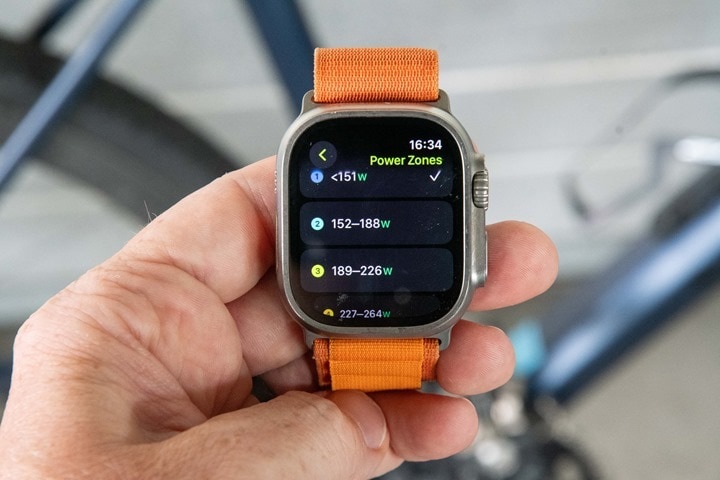
![clip_image001[13] clip_image001[13]](https://media.dcrainmaker.com/images/2023/07/clip_image00113_thumb.jpg)
![clip_image001[10] clip_image001[10]](https://media.dcrainmaker.com/images/2023/07/clip_image00110_thumb.png)
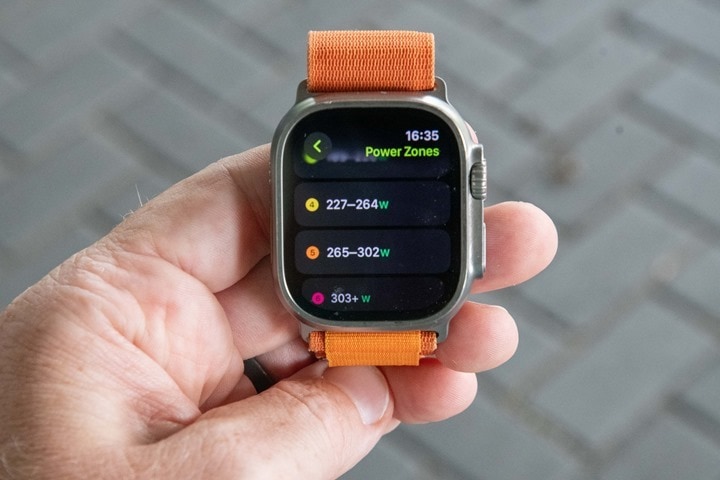
![clip_image001[12] clip_image001[12]](https://media.dcrainmaker.com/images/2023/07/clip_image00112_thumb.png)
![clip_image001[14] clip_image001[14]](https://media.dcrainmaker.com/images/2023/07/clip_image00114_thumb.png)
![clip_image001[16] clip_image001[16]](https://media.dcrainmaker.com/images/2023/07/clip_image00116_thumb.png)
![clip_image001[6] clip_image001[6]](https://media.dcrainmaker.com/images/2023/07/clip_image0016_thumb.jpg)


![clip_image001[18] clip_image001[18]](https://media.dcrainmaker.com/images/2023/07/clip_image00118_thumb.png)
![clip_image001[22] clip_image001[22]](https://media.dcrainmaker.com/images/2023/07/clip_image00122_thumb.png)
![clip_image001[24] clip_image001[24]](https://media.dcrainmaker.com/images/2023/07/clip_image00124_thumb.png)
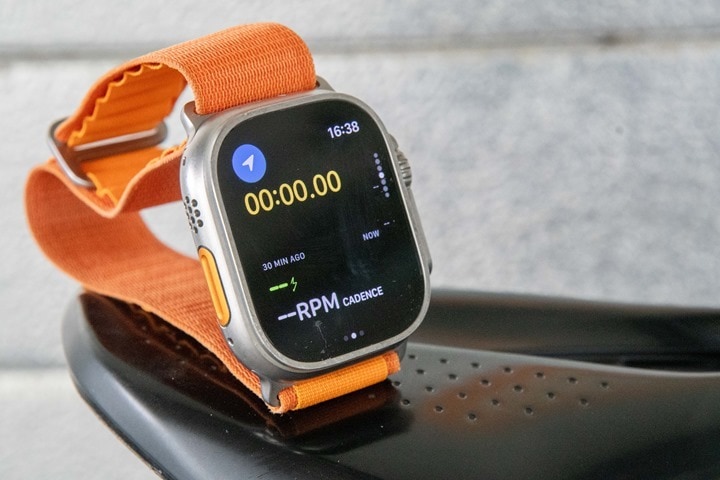
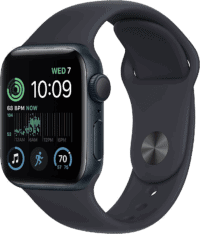

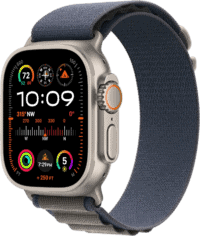





















Assume you have to ride with the AW connected to the power meter and not import a ride with power back from, say Strava, (recorded on a head unit) in order to get the auto FTP functionality etc?
I’d buy an Ultra if I could use it for sending heartrate to my Garmin 1040. Yeah, there are devices that facilitate this but there really isn’t any reason why they couldn’t do this.
I do this using Watchlink but you have a to buy their puck which is totally lame. I wish they just allowed broadcasting.
I even tried an amazon halo which supposedly broadcasts. Garmin picks up the signal but gets no info.
Maybe that would finally push Garmin to get power meter support into the venu line. Although with recent Forerunner devices I don’t see the Venu / Vivo having a future
How does this affect battery life of the apple watch?
Hard to say how battery life is impacted as betas often are weird with battery for a bit. I can say that for some time now I’ve connected an external HRM (Polar H10) to the Apple Watch by the same method used for power meters, and this actually saves me battery life, as when using an external HRM it stops activating the internal HRM. It uses more power to run an internal than connecting to external.
I’ve done about a half dozen sessions with the new power/cadence support with the public beta, and my battery life for my Apple Watch Series 7 does not seem much different than before I switched to the beta train.
Yeah, I don’t have good/clean data yet either. Generally speaking though, BTLE sensor support for most watches/devices has negligible battery impact.
I’ve got a pretty long ride on Wednesday, so we might see a bit more data then. Though, I won’t be dual-rcording (one watch with, one watch without) so determining exact differences is a bit tricky. But I can at least baseline ‘here’s what it looks like with’.
A category not convered in this article is the use of power in Apple Fitness+, which is Apple’s subscription service that offers among other things, spin cycle classes. I’ve used the public beta with Fitness+ and a Stages SB20 smartbike.
What happens is during the session, you cannot use power/cadence at all. Even if you’ve done the steps Ray mentions about to add the proper power and cadence field for an indoor cycling session, that only works when you’re the one starting an indoor cycle session from the Workout app. When using Fitness+, it activates the watch for you, and it’s a more general layout of metrics (heart rate, calories) and not power/cycling. Also on the screen running Fitness+ power and cadence do not show up there either.
However, the power/cadence data does get written to the session for Apple Health and will show up in the Fitness app (as well as the excellent HealthFit app) so one can use power/cadence data with Fitness+ in a way. This mirrors last year’s adding of HR zones to the Apple Watch. Fitness+ still not show the HR zones “live” during a session, neither on the screen running the workout nor the watch, but the zones info is there once the session is ended.
Indeed, it sounds like from my discussion they are aware of the gaps around Fitness+ and power/sensor support. There are a number of other Fitness+ updates within this beta cycle, so perhaps we’ll see more there soon. As you noted, the underlying data is there, which is like 90% of the battle.
If you connect your indoor bike trainer (I’ve got an Elite Suito) to the ultra, and do an indoor ride, does it estimate distance? Or is that still missing?
Cheers
With my Stages SB20 setup, I do not get a distance estimate in Apple Health using this method.
I find distance indoors to not be highly useful, unless using something like Zwift or Fulgaz that simulates an outdoor environment. Then they can report the distance.
For something like a spin cycle class, doing 20km is not necessarily better than 15km, if during the 15km session I was in harder gears and putting out more power. Instead, I’d look at the total work in kiloJoules as a way to judge performance, so I don’t care about not having distance in that case.
I only care about it as I have a distance challenge on Garmin with my outdoor cycling friend, which motivates me to Rouvy. Thanks
What would be better in that case would be for Apple to implement FTMS so it could get distance data by that stream, rather than implementing their own estimate. This would allow people with other indoor spin cycles like the Schwinn IC4 to have data that would match what their own displays show, rather than having two different estimates, which would certainly prompt most people to assume Apple’s estimate was “wrong” as it didn’t match. I see this with people using those type of machines using Zwift, who get annoyed the Zwift distance is less than their bikes, who don’t realize the effect of simulating elevation.
It did actually show/record speed and distance from the KICKR Bike (V1) when I tried that.
It was getting those metrics from the KICKR, not interpolating its own estimates, right? Is speed/distance sent by “bluetooth power” then in some cases? When you mention they aren’t using FTMS I assumed that was what kept me from getting it, but as I said, I didn’t really care as all I wanted was power/cadence.
Maybe it’ll work for Mark then!
Correct. Speed is sent as part of the KICKR Power (non-FTMS) data stream, along with cadence/power. Other power meters do that too, for example the PowerTap hub did that, and a number of trainers. Albeit, not all trainers. It’s kinda hit or miss.
When I do a trainer ride with my Kickr Core connected to my Apple Watch I do get distance recorded along with power and cadence
Presumably, if you’re using a wheels-on trainer, a cheap bluetooth (e.g. Wahoo RPMSpeed) on the rear wheel would also work. Might even be reasonably accurate if your wheel wasn’t slipping.
Is there some trick to connecting an Apple Watch to a kickr? When I open up the BT settings on the watch it doesn’t see the kickr.
Excellent news. I am engaging quite seriously in triathlon and have been very satisfied with the Apple Watch Ultra, especially when using the WorkOutDoors app that features pairing with sensors like power meters . It’s really great to have increased competition from Apple’s stock app itself / to allow any app to access the data via APIs.
Glad to see your comment at the end about broadcasting heart rate data. I’m one of the people who’s commented on your posts multiple times about it. Did you ask Jay Blahnik if they have a reason for excluding it?
I did try to ask if there was a reason for excluding it, but like any well oiled exec he sidestepped. That said, he did say there wasn’t one either, meaning, he noted it was more about lots of things in the hopper. Perhaps HR broadcasting is one of them, just not ready for Public Beta 1.
I do think they’re hearing that message. And I don’t get the impression (from any discussions over the last year) that there’s any ‘hard no’ type reasons here. I know some non-Apple people have cited security or such, but I’ve never heard that cited as a reason. After all, Apple can pair and broadcast HR to Gymkit today.
Plus, I’d hope Apple would understand/appreicate that the entire reason they can do power meter support today is because of open standards, so contributing back into that ecosystem is what makes standards stronger.
I fully agree with you, broadcasting HR would be a great update…
But I think Apple may have to face an issue: as the Apple watch is both a Bluetooth Low Energy and a classical Bluetooth device, maybe it won’t work with every cycling computers (even if they are labelled as BLE compatible)… I have implemented an app (HR2VP) that broadcasts heart rate and power over BLE with the phone: it works with the Karoo 2, Coospo BC200, Magene devices, Garmin Edge 130, but not with many other devices such as other Edge computers (530, 540…). I know there are other apps on the store that do so and we all face the same issue…
This should be fixed first (forcing the connection with Low Energy is on the master side = cycling head unit) and this is maybe a reason why Apple takes some time…
Is it possible to connect the smart trainer to the Apple Watch and the Apple TV at the same time?
It depends on the smart trainer. Basically, whether or not that trainer supports multi-channel Bluetooth.
Right now that’s all Wahoo KICKR products from roughly 2018ish and beyond. So that includes both bikes, the CORE, and all the most recent KICKR units.
Inversely, for Tacx, that’s zero of them. For Elite, it’s the Justo. and for Saris it’s zero of them. Likewise, at present for the Zwift Hub it doesn’t support it, but Jetblack recently added support there, and Zwift seemed to hint it’ll likely get ported over to the Zwift Hub too.
I don’t remember off-hand whether Stages supports multichannel or not.
Stages SB20 sends two bluetooth signals. I’ve done a session where I connected with Zwift on Apple TV and concurrently also connected to the Apple Watch and used the “live activity” feature on the iPhone. Worked great.
As a Tacx user, it’s very annoying to hear. It means that for my Zwift rides I won’t be able to record power at all (I pair my pedals to Zwift for power / cadence consistency with outdoor rides and I obviously pair my Tacx as a controllable, which means that there are no BLE power channels left for Apple Watch)
One workaround there is the NPE Cable, Cord, or Wyur, which will basically take the ANT+ signal and repeat it over BT:
link to npe.fit
link to npe.fit
The USB one simply powers via USB, so you can just kinda leave it plugged it forever into a USB port nearby.
Thanks for the research. I’m on Tacx, maybe a reason to try something new.
Thanks for the suggestion, it looks like this might be a solution to my problem (especially given the fact that I have some unused USB ports on my trainer desk)
I tried the cord and it doesn’t work. Apple TV cannot control the Tacx Flux2 via Cord. The Apple Watch does not take the power values from the cord.
Hey Ray,
Was nice meeting you at WWDC!
Anyway, do you know if Zwifting on a Kickr Bike to an Apple TV works at the same time as recording a watch workout that can also get the power and cadence from the Kickr Bike?
Nice meeting you as well!
Yup, both versions of the KICKR Bike support multichannel Bluetooth, so no problems with Zwift on Apple TV and Apple Watch at the same time. In fact, in the pictures up above, you can see exactly that (albeit, the Apple TV is cropped out of the picture).
I still hope that Apple would create an easy glance to see if the sensors are connected. Sure, with power it’s kinda obvious (if there’s power, the sensor is connected) but with a chest HR strap it’s not obvious at all and having to go to the bluetooth settings every time to check if the strap is connected is annoying as hell.
This is good stuff (both Apple doing it and your detailed assessment). But, as you mention, Apple is missing a gigantic low hanging fruit here with HR. I see absolutely no excuse for not making it possible to use the AW as an HRM for other devices. Neither technical nor business reasons. It would only add credibility to the idea of always using an AW.
Any thoughts on whether Precision Start will find its way onto Watch OS10? Seems a quick win which would instantly be of use to many if not all users.
Great review! The display modification explanation was perfect. I had paired it on the first beta and got data after the ride but had not attempted to modify the displays to see it in real time. I now have a lot of activities I might want to customize to add/arrange the metrics displayed.
Can you set alerts based on the power zones? It would be great in ironman to know when you’re heading out of zone, both cycling and running, to maximise pacing and reduce peak power events I.e ‘burning matches’
Yes, you can set alerts, although I have not used the option yet so cannot confirm how well they work.
Looking at the options, there’s “Target” “Zones” and “Custom Range”. For “Target” you get options for “Average Power” and “Current Power” then specify the watts. For ”Zones” you can select any of the zones you’ve set up. For “Customer Range” you set the lower nad upper limit in watts.
Has anyone figured out if you can set a trailer bike (like a Wahoo Kickr) into ERG mode using an Apple Watch?
You’d need FTMS support for that. Per the article, right now, the beta doesn’t have that.
Maybe in a future release, but not right now, and likely not when it comes out of beta. Alternately, you could find somebody to write an Apple Watch app for it, but that’s not likely to end well, considering just how well third party power meter support went (again, per the article.)
I love this, as and I’m thinking I may drop my Garmin Fenix 6 Pro now. Just keep my AW and my Edge 130.
Any idea how to customise the display on the phone when using the watch? At the minute I only see time elapsed.
I think if Apple add power to Fitness+, it could be a game changer for Peloton. Buy a spin bike and some power pedals and you’re good to go.
I use Peloton Digital alongside Zwift, but paired with the pending price changes for Peloton Digital, I’ll definitely switch over.
Not support stryd still?
That’s what I was hoping, but it seems like this is just for cycling. The Stryd app isn’t as intuitive as Apple Workouts (I never remember which way to swipe to end my run – why can’t they just make it the same as Apple Workouts?!?!), so I’m really hoping this comes to the Watch soon.
I tried it several weeks ago with one of the first betas of watchOS 10. It’s a nice backup solution, but I missed my Wahoo in front of me. Riding a bike and raise your Apple Watch each time isn’t handy for me. Sticking with my Wahoo ELEMNT.
Thank you for a great overview.
Is there limitations on the number of bluetooth devices that Apple Watch can connect to?(like the AppleTV)
For those wondering – surely I’m not the only person with a Wattbike around here – Wattbike have beta firmware support for dual channel bluetooth on the Atom.
I vaguely remember there being a bunch of quirks in reading power meter data using BLE that don’t exist when using ANT+. Is that still the case? How significant would you say that is for somebody who’s coming in completely clean, with no devices to speak of that might tie them down one way or the other? (Just idle curiosity; I have the Fenix 7s, and no need to upgrade any time soon.)
The deficiencies in the Apple Watch are getting fewer for my needs/wants, but Garmin still has the edge… at least for now.
Do you forsee AppleTV adding Powermeter support soon?
Would be a great addition to Fitness+
——
For your site dev: Be great if they added some client side form validation to the form (even just a “required” attribute on the Name and Email inputs for the form, save people typing long responses and hitting enter, only to fail the server side validation.
For Fitness+ on Apple TV, there’s no reason why it couldn’t get the power/cadence once you’ve connected it to the watch. This avoids the problem of the limited connections of the Apple TV, as the TV just has one connection to the Watch and would get HR, Power, and Cadence all from that channel.
As I mention in another reply, right now the data does come through to the end file when having your trainer connected and running a Fitness+ class, but you cannot see it during the ride itself.
At a technical level, Apple needs to change the watch so that it uses your customized Indoor Cycling fields when Fitness+ initiates the workout, and add the metrics to the Fitness+ overlays. I’d say there’s also a programming angle to consider. Do Fitness+ trainers start referring to power in their instructions or just stick with RPE? (i.e. “Go to Easy or Zone 1”) Do they only refer to RPE (East, Moderate, Hard, All-Out) and don’t mention power but you see it on screen? Is there a special open time video “Trainer Tip” so explain power zones, but otherwise not mentioned? Do they do separate power zone classes like Peloton?
Maybe I missed it but can your power meter connect to both an AW and Garmin Edge simultaneously?
If your power meter has either ANT+ and Bluetooth or multichannel bluetooth, yes.
Interestingly my FTP has updated a few times albeit +/- 1-2 watts, which differs to your experience but is also contrary to the Apple 30 day comment (it’s a Beta they’d also say). Also I think it’s about 40w below where I think it should be (and according to Garmin / Zwift) estimates but I’m not counting…
Does the beta provide native support for Stryd? Currently using workoutdoors (which is fine)…
I do not believe there is any native support for connecting any running footpod.
There were no announcements for that; what was announced was all cycling related. I’ve not heard of any reports of anyone discovering such a thing either.
Hi Ray,
I’m curious if you have noticed any differences in calorie estimations with and without powermeters connected to Apple Watch? In WatchOS 9 and prior the calorie burn estimations for cycling seem to be mostly speed-driven, I wonder if power data changes anything in WatchOS 10.
Is it mentioned anywhere if power and cadence will be shown on Apple Fitness workouts (ATV) when using the watch and a smart trainer?
No, there has been no announcement on evidence that power/cadence will be shown in an Apple Fitness+ cycling class, and as I mention in an earlier reply, currently you can connect and get the data collected for the resulting file but cannot see it “live during the activity.
My hope is that later this year when new Apple Watches are announced it will be accompanied with presenting new Fitness+ features to show that data. However, last year when they did HR zones those zones have never showed up in Fitness+ classes.
Question, since it seems like you have the ear of folks at Apple. When will they fix the fact that many “workouts” don’t create a GPS map track. For example, I just went for a paddle on my SUP today and was very sad to see that a map/track was not created. Same thing happens for Nordic skiing. Why on earth would they not create a map track for these activities?!?! It sucks having to use multiple apps to make sure that a GPS track is created. Help us fix this 🙏🙏🙏🙏
I really hope that upon release of WatchOS 10 Apple would add a toggle that would allow you to just record or not record GPS track in any workout. But for now it’s not a bug – it’s a feature. Only a limited amount of workouts support GPS, the rest is “kinda indoors”
Wattbike Atom (Nextgen / 2020) has a beta firmware out that now allows two BLE channels, so thought I’d try pairing it with the Apple Watch with WatchOS10 and my iPad for use with Zwift.
The AW reads the power and cadence from the Wattbike absolutely fine, as well as distance (maybe that’s a calculation). However, major bug that I’ve had is that ERG mode stops working on the Wattbike with the Apple Watch connected via Bluetooth. Hopefully that gets sorted out.
Ignore my last – this is actually the Wattbike Atom’s beta firmware not working with ERG mode in Zwift. Not related to pairing with the Apple Watch.
Hi!
I may be‘stupid’ now, but got any tip on a watt meter censor (BT)? All I seem to find is pedals with built in censors And they’re expensive a f…! Is stand alone censors a thing? Got AWU with public beta and got the iPhone mounted on the bike with the cycling session view. I ‘can’t’ stand having empty data fields, like power and rhythm 😅🤓
You mean a power meter. There are several types, but they’re all built into crank arms or the bottom bracket or pedals (I think the rear hub ones are no more) because in order to measure power you have to measure the force that you apply at the drivechain. There’s no magical sensor that just measures power out of thin air. The closest is the Velocomp Powerpod/Aeropod, which I used to use. It measures air speed, and from that computes air resistance and guesstimates the other (much smaller) opposing forces to compute the power you are generating to overcome the opposing forces. It’s not as accurate as a direct force power meter (all the rest), but it may be enough for your needs, and after the ride you get to see how bad those headwinds were. One problem, since you have an AWU I assume you have Macs. Velocomp’s software doesn’t run on Apple silicon (M series) Macs. That’s the reason when my Aeropod stopped working after many years of use I didn’t replace it.
But I’m surprised Apple doesn’t just let you remove the fields you don’t want. Real cycling head units do.
If you can find one used, a PowerTap (née Saris) PowerCal is probably your least expensive option. Make sure it’s a Bluetooth version, as the original one was ANT+ only. They’re not made any more, so a new one isn’t an option. The PowerCal is a chest strap heart rate monitor that also estimates power based on heart rate, so it’s only an approximation. But it’s actually not too terrible for more or less steady rides. (It’s worthless for intervals, though.) If you can find one, it should be well under $100.
Power meter is correct 😊
Guess I’ll be skipping this. You actually can remove the fields. Just discovered it this afternoon.
I only do MTB, and that is more or less intervals 😅
Yikes. Just tried this public beta out with a very popular power meter – the Favero Assioma uno. Results: doesn’t double the power for the single sided reading (half power is displayed), and no cadence was recorded or reported. And of course, no power export to Strava or Training Peaks. Overall a pretty weak beta version. I looks like I’ll be selling the Apple Watch after all.
Guess things will be well sorted out in the final release, but I don’t expect things like this to work ‘perfect’ or flawless. Sadly I think it will be more of a gimmick than a thing you can trust heavily on.
Hi, isn’t possible yet? I cant get it
iOS17 and WatchOS10 were released a few weeks ago.
I have tried this with Watch OS 10 – Still no doubling of the power, but cadence is recorded.
I believe Favero Assioma Uno has the capability to double the power in case the head unit can’t do this correctly, however, I fear it could mess up other use cases like Zwift or Garmin Edge (haven’t tried).
Hmm, that’s odd. That should definitely be working correctly, especially for Uno. There’s a setting in the Favero app that you can try toggling, which basically controls whether or not it’s doubled. I think it’s currently labeled as Zwift compatibility or something, but it’s for BT connections like what Apple uses.
Hi Ray – I have just bought my first Apple Watch (Ultra 2) and have the Assioma UNO pedal and see the power on my watch and app as the halved number rather than true power, which is annoying.
Also disappointed with the HR broadcast issue having moved across from the Whoop which was seemless for HR broadcasting.
I do like
My new Ultra 2 – but these are two annoying niggles.
The article notes you can’t get the data “out”. But right now if I record a ride on apple watch I can use Strava to import the data – yeah, it’s just speed, HR, and elevation (plus GPS). But does this not work with added cadence/power data?
Strava, and any other cycling app that currently writes to Apple Health, would need to update to import the power and cadence. For those on the beta, the easiest way to get the data is to record using the Apple Watch connected to power/cadence, or use an app that is also in beta that has added the support.
Just one question related to those Garmin speed and cadence V2 sensors. I connected them with no problem to my Apple Watch Ultra (watchOS beta 4) via bluetooth. After a bike ride both separated charts are displayed in the Fitness app and that is ok. However, when I launch the Health app there is only an entry for bike cadence and no entry for bike speed. Any ideas?
I have exactly the same issue.
I believe the new metric for cycling speed is not fully enabled yet in health app.
really hope that Apple Running supports Stryd
Hi Ray,
What would be the best way of connecting everything so that I have the workout recorded in the training app and see all the data via AppleTV in Zwift when using the Zwift Hub?
Many thanks!
(Also posted the question under the Zwift Hub article but I hope in that case a double post is fine dependent on where people read)
What do you mean by “the training app”? Do you mean Apple Health?
I don’t have the Zwift Hub but I quickly glanced at specs. Looks like it transmits in both bluetooth and ANT+, but does not specify multiple bluetooth connections so think this is only one. Apologies if this is wrong.
With only one bluetooth connection, your options are limited. The Apple TV needs a bluetooth connection just to make Zwift work. So you can’t also connect it to the Apple Watch if I am correct. You’ll need to get the resulting data file from Zwift then import it into Apple Health using a tool like HealthFit or RunGap, but the existing versions of those apps wont work; they need to be updated to support the power/cadence data. If you have beta access to one of those then that might be an option, otherwise you’ll need to wait for the full release in the fall.
Many thanks. With the training app I meant to start the training on my watch during exercise but importing afterwards would also work. In your scenario HR would then only work via a separate strap or is there a scenario with the compagnon app?
I forget the current status of using the Apple Watch directly with Zwift. It used to be you there was a watch app but think they ended it? Not sure. However, the issue of connecting Apple Watch to Zwift is one that is separate from the new power/cadence support. It may be you need to connect everything through Companion and that to Zwift on Apple TV.
I can describe my setup, which won’t be very helpful I fear, but just in case there’s an element here that is of minor use.
For heart rate, I use a Polar H10 chest strap, which sends two signals, so one can override the Apple Watch and feed into Apple Health, while the second signal can be used directly in Zwift itself.
With the H10, not only do I get two signals, but the H10 samples more often for me than my Series 7 watch does. The series 7, using the Workout app, is about six samples a minute, so around every 5-6 seconds one sample is given. The H10 gives a sample per second for more data, which is useful for interval training. In another thread, Ray stated the Apple Watch samples more often now in workout mode, but he may have been referring to the Ultra; I’m not sure. I only know what I have. :)
Anyway, Wwith my setup, I don’t need to import. I have a Stages SB20 smartbike that also sends multiple bluetooth signals. I dual record my activities like this:
(1) Apple Watch, connected to Polar H10, and connected to Stages SB20 left power meter to get power and cadence, goes to Apple Health.
(2) Zwift on Apple TV, connected to Polar H10, and connected to Stages SB20 by “bike” connection, to get power, cadence, and controllability, goes to Strava (and onward to intervals.icu).
With this config, I get everything I care about in there right places. The watch won’t get speed/distance data with my particular bike (elsewhere in this thread it seems other setups do get this), and of course has no idea of the Zwift route involved.
Super useful, I’m a keen reader and Garmin supporter but decided on buying an AWU.
I’m hoping they bring across alot more dynamics, I am currently using Stryd with AWU but hoping to connect my HRM-Pro as well (For HR but there’s some more nice things there that can be used)
I changed as I want to use my watch more for daily use (Messaging etc) but still grab my running shoes and go.
Not because I have tons of cash lying around but couldn’t help but try the tech out.
I started with Garmin, then I’ve had an android in the past (Samsung) and had the Samsung classic watch as well, then back to Garmin with most of my tech using that, Fenix6, Edge 530, HRM-Pro, Index S2
I have my garmin data now syncing to Apple Health but there is still years of a Gap from Android days, all my data is basically housed in Garmin (Yes I know I can get it out), the issue is where to store it. (Don’t say Strava as Strava does not store weight, resting heart rate VO2max…FTP…etc etc)
I’m basically looking for a data warehouse that connects to it all, I’ve tried FitnessSyncer but it doesnt work for all.
The current Tech to me means nothing its about keeping it all as I’ve worked hard to get it. I already “Lost” my fitbit data years ago…
I was able to connect my Wahoo pedals to my Apple Watch and that is working great, the negative is when I upload my ride from apple to Strava, my power data doesn’t come across. Is that a setting that I am missing? Or does that functionality not exist today? Thanks for all the great information you share with this community.
I assume you are using Strava to do the upload? If so, then Strava needs to be updated to understand there is additional data that can be sent over. Currently, the best way to send to Strava is to use HealthFit, but you would need the beta version of HealthFit to send the data. The version on the App Store won’t be sufficient for the same reason — apps need to be updated to understand there is power data in the file. Once everything is out of beta and available for everyone this will work of course.
Does anyone else have the issue of power dropping periodically when a Zwift Hub is paired with the Apple Watch to record power?
I have a connection between PC and Zwift Hub via ANT+, so the Bluetooth connection can be used for the Apple Watch. The Zwift Hub runs at constant power in ERG mode. However, values with 0 watts show up regularly in Apple Health.
Hi DC RainMaker,
Thank you very much for this article.
I tried to connect my bike to AWUltra Watch OS10, non problem it found Power et cadence sensors.
I tried to make same thing with heart belt Garmin (Bluetooth and ANT+) but my watch find nothing….Normal or Do you have and idea ?
Thanks
For your bike, which power meter or cadence/speed sensors do you have on it?
On the Garmin belt, it needs Bluetooth Smart on it. So that’d be limited to:
A) Garmin HRM-DUAL (says dual on it)
B) Garmin HRM-PRO (yellow pod)
C) Garmin HRM-PRO Plus (white pod)
Those are the only Garmin straps with Bluetooth Smart, whereas older straps don’t have it.
Cadence, power and speed meter from SRAM Force eTap
Thanks for info about Garmin belt
I will try to test all of sensors this week and I will come back to you.
I tested yesterday my AWU with all of sensors (see above), they are work perfectly in comparaison with Garmin 930. 2 notes for me.
Several screen for watch all of parameters on iPhone (only one on Garmin)
No information on % of slope on iPhone (do you have a solution for that ?)
I hope my information will help someone.
See you.
Will Apple add VO2 max for cycling? I’m enjoying the Ultra for all purpose use. The mirror mode works great with iPhone while biking as a bike computer. The one computer we all have should be better at being a bike computer
Will the new cycling features be available on the original Apple Watch Ultra?
Yes, on all watches that can accept watchOS 10. You realize Ray is using the original Ultra in this article, yes?
Sweet. Thank you! Does anyone know if you will be able to load fit files into your iPhone for turn by turn directions or how you will be able to run turn by turn directions while biking with the the new iOS and watch os?
You may want to review Apple’s site to learn what is new with watchOS 10:
link to apple.com
I don’t thin turn by turn is a thing with the native Workout app, but I do not require it and have not looked into it, so I may be mistaken.
Most people who need mapping abilities turn to WorkOutdoors as a supplement to the watch’s abilities.
link to workoutdoors.net
Do you see VO2max by cycling comeing anytime soon ?
No. Apple tends to restrict major features for once a year. VO2 Max by cycling is not part of iOS 17 and in my opinion unlikely to be added in a point update, so you’d need to wait til next year and see if they add it to iOS 18.
I’d agree. I wouldn’t expect it, and in my conversations with them, it didn’t seem like that was a priority.
Hi, I have paired my Specialized Turbo Levo 2018 with my AW and cadence data is going fine, but not power! anyone experiencing similar issues? Any suggestions!
Thanks in advance!
What else do you have it paired with? I just went out in the garage and turned on my Turbo Levo, which I got last year (so it’s a ’21 or ’22, don’t know for sure). Settings -> Bluetooth on my AW Ultra could not see it at all (no power or speed/cadence), but that might be because my iPhone grabbed the Bluetooth channel. The Specialized app on my iPhone could see it just fine, and Settings -> Bluetooth there showed it paired to my iPhone. Remember that Bluetooth is single master only, and I’ve often had to unpair devices to get them paired elsewhere. I’m not sure if the Turbo Levo has multiple Bluetooth channels (which happens often nowadays to get around this limitation); I can’t think of a reason why it would.
Has anyone tried using Apple Watch with Elite Justo indoor trainer?
I did my first indoor ride and power was transmitted correctly.
However, I was a bit surprised when I noticed that I did 190km in one hour.
Accodring to the support article from Elite link to support.elite-it.com it seems the value for circumference set on any non-Elite apps should be 218mm.
The problem is that Apple watch doesn’t allow wheel circumference smaller than 300mm.
Anyone else encountered this problem and found any workarounds?
A circumference of 218mm equals a diameter of about 69mm – that’s absolutely tiny (C = πd). I can see how they might have arrived at that end result – if the flywheel rotates 9.6 times faster than a “real” wheel would, you’d want to set the circumference that low to compensate – but it’s not surprising that the Apple watch software would consider such a small circumference to be an error.
My attitude when it comes to indoor trainers is to ignore the speed and distance – they’re essentially meaningless – and focus instead on time, cadence, and power. Those three metrics fully inform the effort in an indoor trainer; speed and distance are completely artificial and only bear a resemblance to reality through coincidence. It does take a bit of a mental shift to do that, though.
I agree that distance doesn’t make that much sense on a trainer.
The annoying thing is that it just gives me some really meaningless numbers in terms of speed and distance(190 km/h) and those are saved to Apple Health.
Do you know if there’s a way to make Apple Watch only use power numbers from the trainer and ignore speed signal coming from it?
I don’t know of a way to have the distance values ignored, but you can manually delete them after the workout.
Health App → Workouts → Show All Data → (select workout) → Total Cycling Distance → Edit → Delete All
link to discussions.apple.com THIS post must receive more attention from Apple
Use 173 – it’s an Elite quirk, not Apple. Long been a thing well before Apple came along.
Absolutely right but Apple could permit the wheel size selection to be a free chosen value, so we can use the elite workaround for their problem (link to elitesrl.zendesk.com)
But not allowing to change values of wheel size in a larger range is only an Apple choice!
Gotchya. I misunderstood the inability to set it below 900.
I’ll give some pokes!
Or maybe for all the Elite users of smart trainer that are sharing stats directly from the trainer about speed (and consequently distance) is it possible in the settings of the watch to refuse to use the trainer as a source of speed data and distance?
Because another idea I have is to remove in the Health App on the iPhone the data source “Bluetooth device” from the “bicycle speed” section, but I imagine I will have to replicate the procedure every time I save a workout.
Obviously all of these ideas are not solving the main problem of innacurate data from the trainer but the intention is to mitigate the problem with medals received from the watch about record speeds or distance on bike and, because indoor and outdoor bicycle stats are not separated in Health App
Thanks for the great article. Unfortunately my Apple Watch Ultra 1 and my Stages SB20 won’t pair correctly. They pair but the watch will only display cadence. I can not get it to display power. The power field is turned on on the watch and I have tried forgetting the SB20 and re-pairing many times, but I can’t get it to work. Can anyone help?
I’m not sure I can help much, but my Ultra (1st gen) works fine with my Stages left-only power meter. I believe my meter is the 2nd generation (not the current 3rd generation); the identification on the label ends with “SPM2” which I’m guessing is an acronym for Stages Power Meter 2.
Since your watch is showing cadence (and you don’t have a separate cadence sensor, right?), that would rule out the possibility that the power meter’s bluetooth connection was being hijacked by another device (cycling computer or phone).
The only thing I can think of is making sure your Stages firmware is up to date. Though, truth be told, I don’t think I’ve even checked mine in years.
You could also try resetting your watch to factory defaults and then restoring from backup. That’s kind of a pain, but as a last resort it might be worth trying. If you go this way, you might want to have a look at Apple’s support documents to make sure everything is backed up and can be restored correctly. Google is your friend there.
Good Evening from France
I would like to have a GPS guidance of a circuit that I do at the same time as the data do you know a solution?
Thanks
Buy a Garmin watch?
That’s a current problem with WatchOS. You can’t navigate and record at the same time with the native software. Third party apps like the WorkOutDoors app might be able to do that. (I have a Garmin Epix 2, so I don’t use my Ultra for those kinds of things.)
has anyone happened to connect an apple watch to a smart trainer (Justo in my situation) and see an exaggerated hourly speed? and consequently an exaggerated distance traveled value
Has anyone successfully gotten the power data to come from a schwinn iC4? The apple data manages to get my rpm from it but not the output data I can see when the bike is connected to other apps like Kinetic.
The Schwinn IC4 (also known as IC8 and same bike as Bowflex C6) sends its estimated power readings by the bluetooth FTMS service, which Apple does not directly support yet. Cadence is sent two ways, also by FTMS, but also as a separate “cadence sensor” which is why you see cadence but not power.
Once apple enables watch connected to bluetooth FTMS gym machines then the IC4 should work fine, but Apple has not announced this feature. When Apple does their WWDC event later this year in June we may get an idea if they plan to do it this year. If it does get announced, then it would be a public release in the fall with next watchOS.
Thanks so much!
Hi! I have a elite suito trainer and I am trying to Connect to my ultra, i can see the power, but no speed or distance is showed.
Actually when i finished my train it shows 0,5km total distance or similar…
Do you have any idea why?
Hi,
I’m testing my Apple Watch Ultra 2 right now… Coming from long time user of Garmin Watch, i must say that’s no so easy. It’s a challenge to try and understand what app to use on the watch to be sure to have data in Health or Fitness.
From what i’ve observed so far, the best is always to use “Workout” native app to not lose data, right ? Aka, power from cycling, cadence and all abour Bluetooth relatated connected data. If we use other apps, like Strava apple watch app or Kinomap, or Stryd, we will not have the power or HR data in the Health and Fitness app, right ?
Other thing, i read that now Apple watch support Running power. I’ve try some run and never had the power data in my summary. So, i try via connecting my Stryd Running Power Meter direct on watch via bluetooth, no luck either. I then connect it via the Apple Watch Stryd app and got power in the Stryd app and was seeing it on the watch during activities. But again, no power is show in the Fitness app summary.
Can someone help me to better understand how it works and how should i use the app/watch/bluetooth thing to not make me regret to pass to Apple Watch ? ;-) Thx for your help!
Steph
Hi Ray,
Any updates on bug fixes and/or new features on the power meter for AW?
Cheers!
Hi Ray!
Recently I found a “serious” issue about how the outdoor calories was counted when connected with a power meter.
Usually the “industry standard” of how this was calculated when a power meter was presented is to use the equation of power(joules/s)*duration(s) to get the precise work in joules, /1000 to get Kilojoules, then /4.06 to get the Calories, then /0.25 assume a gross efficiency of 25%, to get the exact Calories your body actually burned.
This is how the Garmin and everyone else is using when counting calories, and that’s why using a power meter for the calorie counting was considered to be accurate because there’s no more guesswork, besides the 25% gross efficiency assumption which is anyway true for most people and the variations if any would only be about 1%~2% to be most.
However during my recent experience, that was not the case with Apple at all. Even with a power meter connected and power data recorded properly, it seems the watch still uses either HR data or the speed data to do the “guesswork”. For most “real” cyclist it will hugely overestimate the actual calories they have burned. And if you use that number to do weight management, or evaluate how much calories you need to take in to recover, you will hugely overshoot and eating much more than what’s actually needed. If being unaware for a long time, you will not only not lose weight, despite of all the “workouts”, but will gain weight and you don’t even know why.
For example my last 4hr ride (~100km, 1200m elevation) on AW shows 3155 active calories (not total calories, I know the difference), while Garmin shows 2430 (validated with power/work number, not total calories also). They were connected to the same PM (4iiii) all the time. The auto pause on both watch was on, and the duration was well matched. That was a huge discrepancy of 725 Calories. Or a 30% overestimate if we take the Garmin or the “industry standard way” as correct. Big enough to make a huge impact on any nutritional plan.
Previously during my shorter rides I didn’t notice this because I was casual with them (that’s why I just used the AW). The number seems to be in the ballpark also because the base number was much smaller and I never suspected anything. But now in hindsight I think I might be too optimistic about it and I was over fuelling for all these rides as a result (luckily not much, and they are short so I don’t actually change my meal, you don’t micro control a 100 Calories discrepancy).
What’s weird is it’s only the “outdoor cycling” behaves in this way. The “indoor cycling” is surprisingly well implemented. The “indoor cycling” is proper to a point that it would even ignore the speed sensor even if it does connect and would only use power data for everything. Though it would still add “active calories” when power was 0 and I was off the bike, the number was so moderate and I feel it only adds to the “accuracy” rather than throw it off. The final calorie count could be well validated with power number using that industry standard equation. So this is only “outdoor cycling”.
Let’s assume someone who was used to power just “switched” to AW for whatever reason, he/she would never think twice about it because for any other devices for over a decade, if you connect it with a PM, the calories comes from the power. Without any prior knowledge of this issue, he/she will just assume the calculation was “correct” or at least inline with other industry player. When that AW shows 2000 Calories, he/she would eat/fuel a respective amount of meal/energy-gels in accordance with a previous 2000 Calories ride, because that works for years. However only to find that after 7 rides, he/she gained 1 pound of fat because for a 30% over-estimation, the actual calories burned would only be 1500 Calories, and that extra 500 Calories accumulated for 7 rides would become 3500 Calories and that’s about what’s worth of 1 pound of fat.
If this guy was a competitive-ish cyclist on his/her pre-season, then kiss good bye to this year’s goal because nothing will happen when you are overweight… Or if this guy was some ordinary obese folk who just wants to lose some weight from cycling, because everyone suggests it, he/she would probably just give up cycling after few months, feeling frustrated and self-hating, because despite doing everything right, the weight doesn’t change at all, if not increasing, if he/she eats to the number shows on that Apple Watch.
All I said was this is serious but I don’t see enough recognition. I don’t even get much search result about this. I know “power meter + Apple Watch” makes a very niche group of people, that might explain why nobody seems talking about it, but I think that’s why you should get us covered.
Would like to know how you think about it and if you find what I find here is true. Apple probably don’t even care due to the niche nature of this thing. I don’t have any hope for them. But maybe you can at least give it some shout to bring more awareness of this issue.
At least highlight this in every new Apple product reviews that “EVEN WITH A POWER METER NOW CONNECTABLE TO YOUR APPLE WATCH THE CALORIES NUMBER WOULD NOT BE THE SAME AS YOU USED TO SO WATCH OUT”.
In this way at least innocent cyclist won’t get hurt from this issue…
In general, I either ignore or give little weight to estimated calories readings from all companies. I would look at just the total Work in kilojoules without modifying as a substitute, as noted in this article:
link to trainerroad.com
“ For practical reasons, most cyclists approximate this to: 1 kJ to 1 Calorie.”
For Apple in particular, I recommend the app HealthFit to see the difference between Work and calorie estimations.
This screenshot from a recent cycling session can illustrate the difference. In this example, under Power we see that Work is reported as 364kJ, while the Active Calorie estimate under Energy is 450kcal. I’d start with the work value of 364kJ.
If I am tracking this as a “high score” for my session, then I just leave it alone, and compare with previous sessions.
If I am tracking this for nutritional reasons, then my attitude is I want my estimation to follow “Price is Right” rules — close without going over — so I’d use 300 or 350 as my input. In general, for nutrition, I round things up or down for even numbers as it’s simpler and all estimations anyways unless one is going to a lab. In my experience, most people who struggle with calorie estimations screw up nutrition in the kitchen, underestimating how many calories they consume, typically due to estimating based on a portion size lower than they consume. If something says it is 460 calories to eat then rounding up to 500 helps to ensure a calorie deficit. Of course, reverse this for those trying to gain weight.
A final note on this topic, as someone who went from 90kg to 66kg, is I would not advocate changing food intake radically day to day based on a ride. Instead, it’s better to have a consistent diet, and for a calorie deficit, you want to target a number that you can do on your rest days based on overall TDEE (total daily energy expenditure) which is a combination of your BMR (basal metabolic rate) and your active calories. As an example, I currently have a BMR of about 1600 and on my rest days my active calories is about 400, making a total TDEE of 2000 calories. If I wanted a deficit (I do not), then I’d want to target a value somewhat under this, perhaps 1800 or so, but one should check with their doctor or nutritionist to make sure one has a healthy diet.
As an Apple Watch user, I also use this 400 as my “move goal” so I can sure closing my rings on my rest days with light activity like walking or yoga. On more active days, I do quite a bit more, sometimes over 800, which Apple makes as a “200%” award in the Fitness app. Importantly, I try to eat similarly day to day, so do not take this as a reason to suddenly consume an additional 400 calories.
However, I also don’t do extreme activities — for running I do 5km and 10km and not longer distances like half/full marathon, so the approach above will suffer on those more extreme days. I do think it is important to have a fairly consistent diet, and not go from one day with just a salad and an apple to another day where one consumes an entire pizza. I dislike the idea of only being concerned about calories for an activity and not overall TDEE and maintenance on rest days.
Again, people should check with medical professionals if they intend to radically change their weight to ensure one does so in a healthy way.